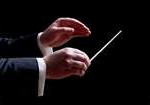A series looking at the art of the choral conductor.
How should a conductor relate to their choir: should they ask them to create a sound in the manner they conduct, or tell them ? Should they invite a response from the choir, or should they demand it ?
The days of the dictatorial conductor are long gone; no more the total authority of a Karajan, or the sheer force of a Solti, famously nick-named the ‘Screaming Skull.’
Ensemble musicians need to feel that they are being developed, even in a large-scale ensemble like an orchestra or a choir. A conductor who imposes his will by brooking no arguments can make his musicians feel that they are being given no room to develop themselves if they are simply forced to play in the manner someone else dictates. Musicians at La Scala famously rejected Maestro Muti on the grounds that, although he is a world-class conductor, they felt they weren’t being given the ability to develop as players: they were simply doing what they were told all the time.
A conductor should always bear in mind that conducting is an ensemble event: you need the singers or players to perform not just for you, but with you.
The best compliment I ever received as a student conductor at university was from someone who remarked that, in directing a group of musicians, the way I brought them in was in a manner that invited them to play, rather than told them ‘right, you’re coming in NOW!’ This has really stuck in my mind, and I think is perhaps a technique that should be remembered: ask your singers to give of their best, rather than tell them they have to be giving it.
As a conductor, I feel my job is done when the choir can perform without my standing in front of them at all. They have the confidence, the experience, and the trust in one another to perform almost without being directed. On these occasions, my job is simply to remind them of what we’ve rehearsed – dynamics, phrasing, etc. – and cajole them into doing what they know they can already do.
Let them fly, and they’ll take you with them into greater heights than ever they would have, had you been driving them along instead. Ask them.
